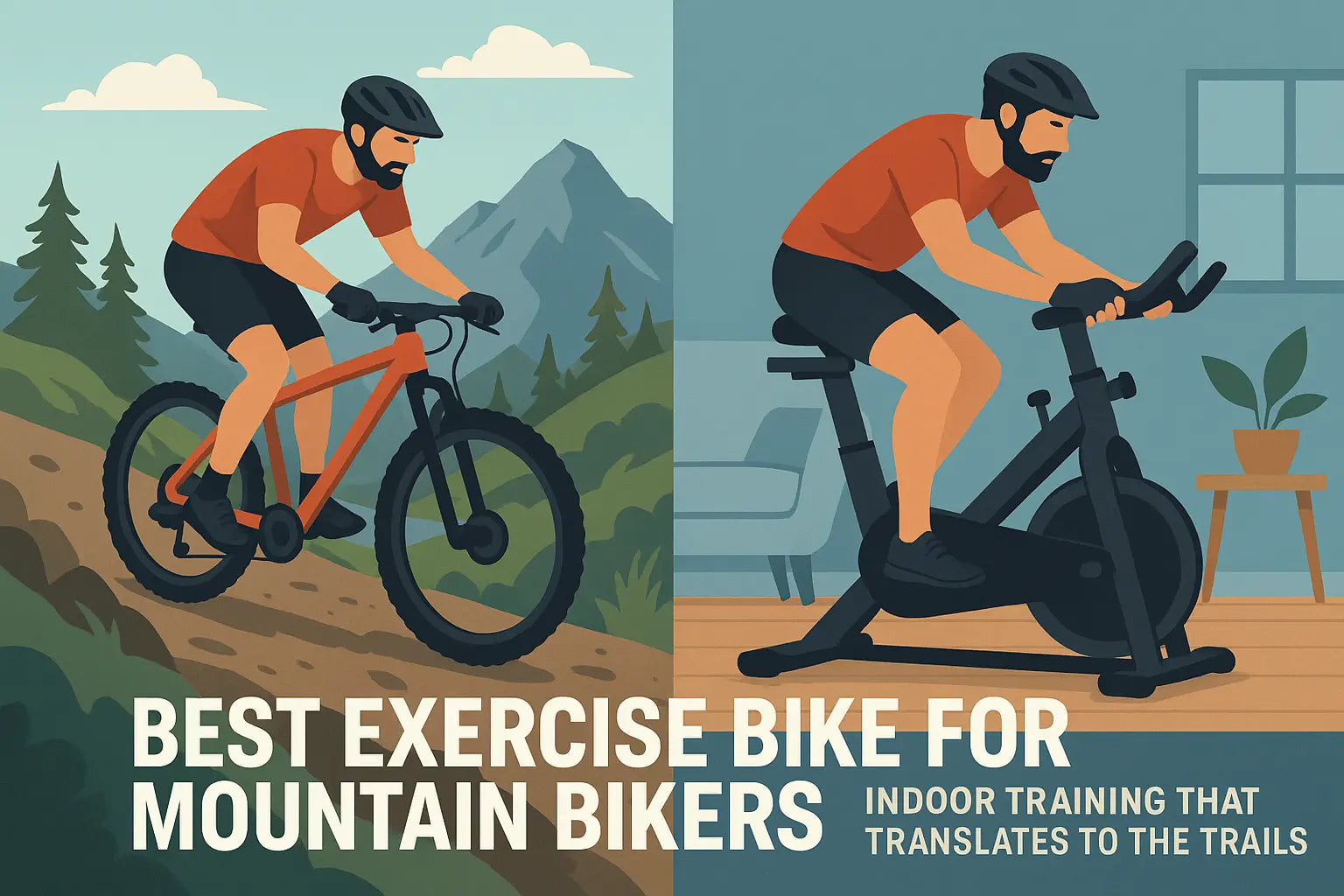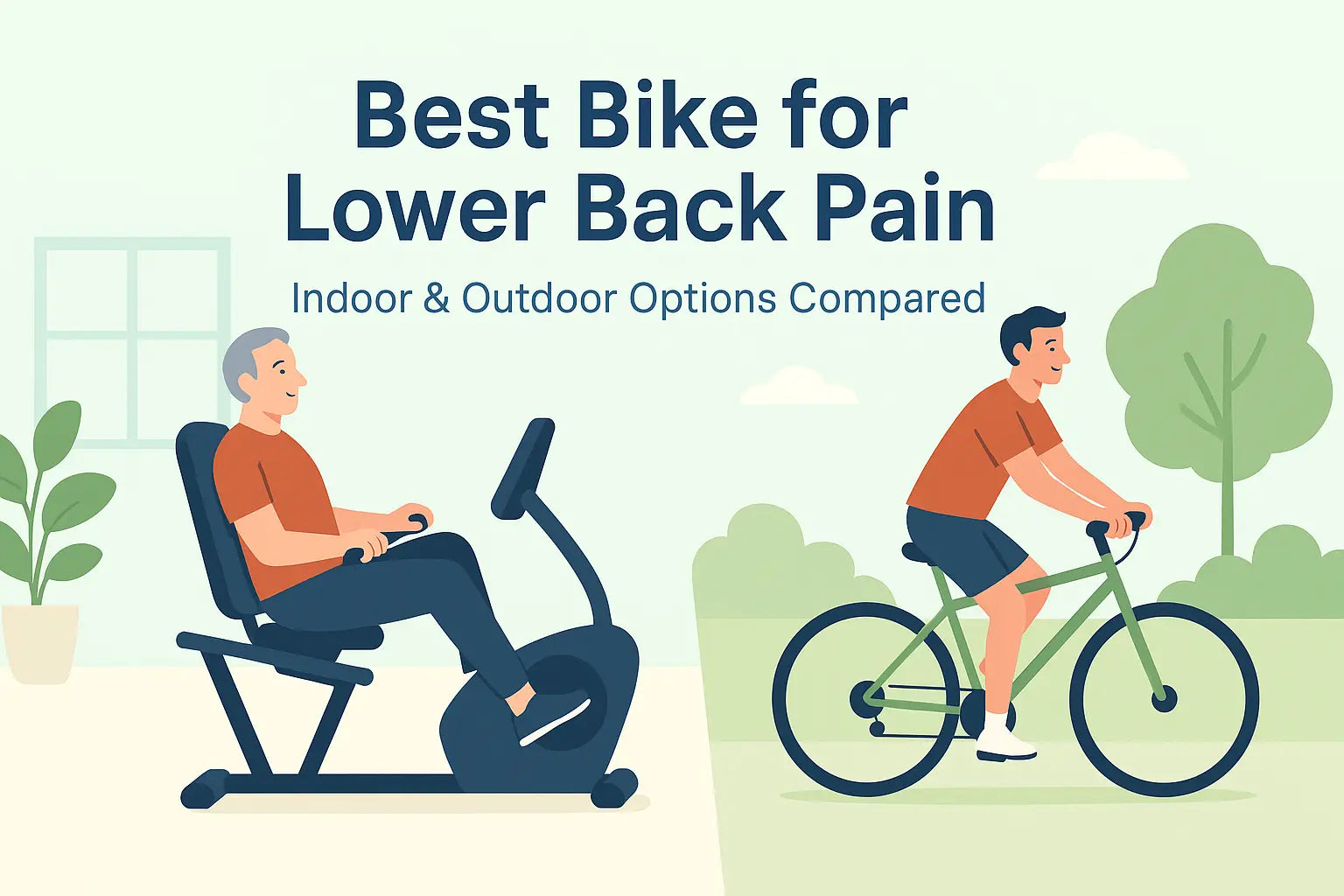If you’ve recently browsed through fitness equipment catalogs or toured your local gym, you might have noticed a curious-looking machine called a “recumbent bike.” Unlike upright bikes or treadmills or a typical stationary bike, it features a large seat with a supportive backrest and pedals positioned in front of the user rather than below. But beyond its distinctive design, many people find themselves Googling: what is a recumbent bike? Is it just a more comfortable version of an exercise bike, or does it offer something unique for your health and wellness journey?
In this article, we’ll go beyond the surface-level definition and unpack what a recumbent bike really means—not just in terminology, but in its impact on your workouts, your body, and your long-term goals. Whether you’re recovering from an injury, starting your fitness journey, or looking for a way to exercise without joint pain, understanding the recumbent bike meaning could be the key to unlocking consistent cardio success.
What Does Recumbent Bike Mean?
At its core, the recumbent bike meaning is straightforward: it’s a stationary exercise bike designed so the rider sits in a reclined position, also known as a reclined position, or laid-back posture. The word “recumbent” comes from the Latin word recumbere, meaning “to lie back” or “to recline.”
Unlike traditional upright bikes, where you perch in an upright position on a small saddle and lean forward toward handlebars, a recumbent bike provides a wide seat with lumbar support and places the pedals out in front. Unlike a traditional bicycle or upright bike, a recumbent bike provides a setup that reduces strain on the lower back, wrists, and knees, making it especially popular among older adults and people with limited mobility.
Here’s a quick summary:
|
Feature |
Recumbent Bike |
|---|---|
|
Seat Type |
Reclined, wide with back support |
|
Pedal Position |
In front of the user |
|
Posture |
Lean-back, ergonomic |
|
Target Users |
Beginners, seniors, rehab patients |
|
Key Benefit |
Low-impact cardio with comfort |
Recumbent Bike vs. Upright Bike: What’s the Difference?
Understanding the recumbent bike meaning often involves comparing it to its more familiar cousin: the upright bike. Both are excellent tools for cardio and are among the most popular stationary bikes and exercise bikes found in gyms and homes, but they cater to different needs and comfort levels.
Upright bikes mimic the posture of outdoor bicycles. They offer an intense workout, particularly for those targeting their glutes and core. However, because you lean forward, they can put strain on your back, neck, and wrists—especially during longer sessions. Upright bikes are often chosen by those looking to cycle in a way that closely mimics outdoor riding.
Recumbent bikes, by contrast, focus on accessibility and support. They allow for longer sessions with less fatigue due to the seated posture and full backrest. This doesn’t mean they’re less effective. In fact, many users find they can work out longer and more consistently on a recumbent bike, leading to better long-term results. Recumbent bikes are suitable for users of any fitness level, from beginners to experienced athletes, due to their supportive design.
|
Comparison Point |
Recumbent Bike |
Upright Bike |
|---|---|---|
|
Comfort |
High (backrest, larger seat) |
Moderate to low |
|
Back/Wrist Strain |
Minimal |
Potential strain |
|
Muscle Focus |
Legs, glutes (low strain) |
Legs, glutes, core (higher intensity) |
|
Ideal For |
Seniors, beginners, rehab, home users |
Athletes, HIIT enthusiasts |
What Recumbent Bike "Means" for Different People
To fully understand the recumbent bike meaning, it’s helpful to see how this machine fits into different people’s lives.
-
For beginners, it means a low-barrier entry into consistent exercise, with a focus on low impact exercise that minimizes risk of injury. No intimidating posture or confusing setup. Just sit down, press start, and pedal.
-
For seniors, it represents safety and independence. A recumbent bike allows aging individuals to maintain cardiovascular health without putting stress on aging joints and is especially beneficial for those with mobility issues, as it provides a safe and accessible way to exercise.
-
For people recovering from injury, it means controlled motion. Physical therapists often recommend recumbent bikes for knee, hip, or spinal recovery.
-
For busy professionals or parents, it means multitasking. You can read, watch TV, or even check emails while pedaling.
Source: The National Institute on Aging [1] recommends recumbent bikes as a safe, joint-friendly option to support heart health and mobility in older adults.
In essence, the recumbent bike meaning adapts to the user. It can be a rehab tool, a fat-burning machine, or even a mental-health booster by offering less stress on the joints and muscles compared to other cardio equipment when used for gentle, meditative rides.
Key Benefits That Define the Recumbent Bike Meaning
The recumbent bike isn’t just a comfortable chair with pedals. It delivers real fitness results. Recumbent exercise bikes and recumbent bicycles are both designed to provide a comfortable yet effective cardiovascular exercise experience. Here are the benefits that shape the true recumbent bike meaning:
1. Joint-Friendly Cardio
-
Minimal impact on knees and hips
-
Perfect for arthritis or joint replacement recovery
-
Recumbent bikes are a great option for those seeking a full body workout without excessive strain.
2. Sustainable Fat Burn
-
Easier to ride for longer durations
-
Great for maintaining heart rate in fat-burning zone
-
With consistent use, you can burn more calories over time, especially during longer sessions.
3. Full Back Support
-
Reduces postural fatigue
-
Encourages better alignment
-
This makes recumbent bikes ideal for long rides, as the ergonomic design reduces discomfort.
4. Easy to Use
-
Sit, start, and go
-
Intuitive for all ages
5. Versatile for Home Use
-
Quiet and compact
-
Doesn’t require gym-level supervision
Source: According to the Mayo Clinic [2], stationary cycling is a recommended low-impact activity for individuals recovering from joint surgery or managing arthritis symptoms.
Muscle Groups Worked: The Physical Impact of Recumbent Biking
Recumbent bikes aren’t just about comfort—they’re powerful tools for building strength and boosting cardiovascular fitness. Thanks to the unique recumbent riding position, riders can enjoy a low impact workout that targets the major muscles of the lower body while minimizing stress on the joints.
When you settle into the reclined seating position of a recumbent bike, your legs are extended in front of you, allowing for a smooth, natural pedaling motion. This setup puts your quadriceps, hamstrings, glutes, and calves to work with every rotation of the pedals. The large, supportive seat and backrest mean you can focus on engaging these muscles without worrying about discomfort or fatigue in your back or wrists.
As you pedal, your quadriceps and hamstrings work together to extend and flex your knees, while your glutes and calves provide the power needed for each push and pull. The core muscles—including your abdominal muscles—are also activated to help you maintain balance and good posture throughout your ride. This means that, even though the focus is on the lower body, you’re still getting a gentle core workout as well.
Compared to upright bikes, recumbent bikes often provide a more intense workout for the hamstrings and glutes. The recumbent riding position allows for a more efficient transfer of power from your legs to the pedals, making each movement count. Many recumbent bikes also feature adjustable resistance levels, so you can tailor your workout to your fitness goals—cranking up the resistance to build muscle strength or lowering it for a steady, cardio-focused ride.
This combination of ergonomic design, comfortable riding, and targeted muscle engagement makes recumbent bikes an excellent choice for anyone looking to improve their physical fitness. Whether you’re managing joint pain, recovering from an injury, or simply seeking a low impact form of exercise, recumbent bikes offer a safe and effective way to strengthen your lower body, boost your cardiovascular health, and enhance your overall well-being. With their supportive seating position and customizable workouts, recumbent bikes are a smart addition to any exercise routine—helping riders of all levels pedal their way to better health.
Misconceptions About Recumbent Bikes
To grasp the full recumbent bike meaning, we also need to debunk some common myths that may discourage new users:
-
“Recumbent bikes are only for seniors.” While seniors benefit greatly, athletes use them too for recovery rides.
-
“They’re not intense enough.” With higher resistance settings, they can provide challenging cardio sessions.
-
“They don’t work your core.” While upright bikes engage more core, recumbent bikes still challenge your abs, especially if you ride without holding the side handles.
-
“Recumbent bikes aren’t for competitive cyclists.” While recumbent bikes offer comfort and support, they may not provide the same level of speed and agility as traditional upright bicycles, making them less suitable for competitive cyclists seeking high speeds.
These misconceptions narrow the perceived value of the machine. In truth, its versatility makes it one of the most useful pieces of cardio equipment available. However, for those seeking other forms of intense training or racing, upright bicycles or traditional upright bicycles may be preferred.
What to Look For in a Recumbent Bike
If the recumbent bike meaning now resonates with you, the next step might be buying one. But not all models are created equal. Here’s what to consider:
Must-Have Features:
-
Adjustable seat and backrest
-
Magnetic resistance (for quiet, smooth operation)
-
LED screen with workout feedback
-
Heart rate sensors
-
Step-through frame for easy access
If you are considering outdoor options, recumbent tricycles are a popular choice. A recumbent tricycle features three wheels for enhanced stability, making it suitable for riders with balance concerns or mobility issues. In contrast, traditional recumbent bicycles typically have two wheels and may require more balance. Some recumbent tricycles use a short wheelbase design for improved aerodynamics, while others have a longer wheelbase for added comfort. The front wheel and rear wheel configuration can affect handling, and recumbent tricycles often have a larger turning radius, which may make tight turns more challenging in confined spaces. One of the ergonomic benefits of recumbent bikes is that they distribute the rider's weight more evenly across the seat and backrest, reducing pressure points during long rides.
Nice-to-Have Features:
-
Bluetooth or app connectivity
-
Built-in workout programs
-
Tablet holder or media shelf
|
Feature |
Why It Matters |
|---|---|
|
Lumbar Support |
Comfort during long sessions |
|
Resistance Levels |
Progression and intensity control |
|
Weight Capacity |
Safety and durability |
|
Portability Wheels |
Easier to move around the house |
Conclusion: Recumbent Bike Meaning, Redefined
So, what is the true recumbent bike meaning? A recumbent bike is a stationary exercise bike where the rider sits in a reclined position with pedals in front instead of below. Whether you’re easing into fitness or recovering from injury, this machine offers a way to stay active without stress or strain. For many, it turns exercise from something intimidating into something doable.
In a world full of flashy HIIT classes and bootcamp trends, the recumbent bike quietly delivers results, builds habits, and protects the body. And that, perhaps, is its most meaningful quality of all.
If you’ve been unsure whether it fits into your routine, just remember: comfort doesn’t mean compromise. In fact, it could be the smartest step you take toward better health—one pedal at a time.
Reference
- National Institute on Aging. (n.d.). Exercise and physical activity. U.S. Department of Health and Human Services. https://www.nia.nih.gov/health/exercise-and-physical-activity
- Mayo Clinic Health System. (n.d.). Staying active with joint pain. https://www.mayoclinichealthsystem.org/hometown-health/speaking-of-health/staying-active-with-joint-pain
Latest Articles








